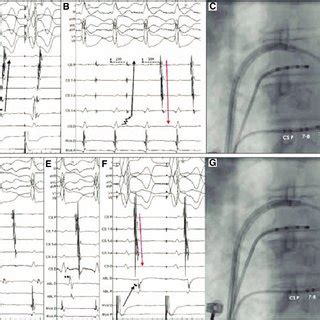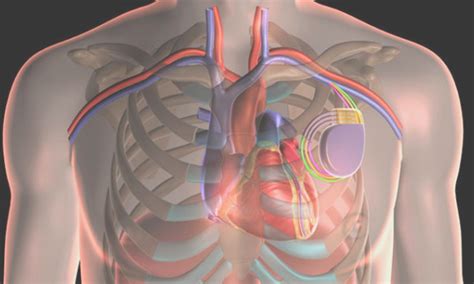lv pacing | best left ventricular pacing lv pacing Optimal left ventricular (LV) pacing requires placement of the lead in a stable location that is free of significant phrenic nerve stimulation (PNS) and is likely to result in clinical benefit. Croduret 40LV is a low vicosity fragrance solubiliser, which is ideal for fragrances and oils used ina wide variety of aplications. Traditional products used for this applications require heating before use, however Croduret 40LV is pourable at room temperature, making it much easier to handle.
0 · retrograde left ventricular pacing
1 · rapid ventricular pacing
2 · left ventricular pacing therapy
3 · left ventricular pacing chart
4 · left bundle branch pacing technique
5 · left bundle branch pacing guidelines
6 · left bundle branch area pacing
7 · best left ventricular pacing
Women Seek Men

retrograde left ventricular pacing
Optimal left ventricular (LV) pacing requires placement of the lead in a stable location that is free of significant phrenic nerve stimulation (PNS) and is likely to result in clinical benefit.The endocardium lines the entire inner surface of all the heart chambers and is .An anatomical review of the right ventricle. Joy M.H. Wang, . Marios Loukas, in . Thus, left bundle branch pacing (LBBP) has emerged as an alternative method for delivering physiological pacing to achieve electrical .
The true breakthrough was the possibility of LV stimulation in patients with HF with reduced ejection fraction and high-grade intraventricular conduction disease, through the .Optimal left ventricular (LV) pacing requires placement of the lead in a stable location that is free of significant phrenic nerve stimulation (PNS) and is likely to result in clinical benefit. Thus, left bundle branch pacing (LBBP) has emerged as an alternative method for delivering physiological pacing to achieve electrical synchrony of the left ventricle (LV), 3–7 especially in patients with infranodal atrioventricular block and left bundle branch block (LBBB).
The true breakthrough was the possibility of LV stimulation in patients with HF with reduced ejection fraction and high-grade intraventricular conduction disease, through the design of coronary sinus leads dedicated to left heart pacing and implementing electronic resynchronization algorithms. The proof of concept of CRT was provided by the . Patients with left ventricular ejection fraction (LVEF) of 35%–50% who are expected to require less than substantial (< 20%–40%) ventricular pacing may not have a sizable benefit from CPP; therefore, traditional RV lead placement with minimization of ventricular pacing, CSP, or CRT in the setting of LBBB are all acceptable options. 7. Endocardial LV pacing can achieve cardiac resynchronization and may offer distinct advantages over conventional CRT, including a wider choice of pacing sites and potentially superior electrical resynchronization and hemodynamic response. LV Pacing Best Practice. This recommended approach to unipolar LV guidewire pacing outlines the key steps of LV guidewire pacing during the phases of the TAVR procedure; the procedure setup, LV guidewire placement, circuit grounding and connection, capture testing and valve deployment (Table 1).
LV endocardial pacing enables access to faster endocardial conduction and site-specific pacing, unlike conventional CRT.[6–9] This article will discuss LV endocardial pacing and LBBAP in detail, including the potential benefits and risks of . Left ventricular septal pacing (LVSP) and left bundle branch pacing (LBBP) have been introduced to maintain or correct (left) ventricular (dys)synchrony. While LBBP produces better intra left ventricular synchrony, LVSP provides better interventricular synchrony, based on compensation of slow transseptal conduction, short path length of .Abstract. Left ventricle (LV) pacing can be considered peculiar due to its different lead/tissue interface (epicardial pacing) and the small vein wedging lead locations with less reliable lead stability. The current technologies available for LV capture automatic confirmation adopt the evoked response (ER), as well as “LV pace to right .
Left ventricular (LV) pacing via an implanted coronary sinus (CS) lead is the first-line approach for achieving CRT, but 30% to 40% of patients do not respond to this conventional CRT (2).Optimal left ventricular (LV) pacing requires placement of the lead in a stable location that is free of significant phrenic nerve stimulation (PNS) and is likely to result in clinical benefit.
Thus, left bundle branch pacing (LBBP) has emerged as an alternative method for delivering physiological pacing to achieve electrical synchrony of the left ventricle (LV), 3–7 especially in patients with infranodal atrioventricular block and left bundle branch block (LBBB).
The true breakthrough was the possibility of LV stimulation in patients with HF with reduced ejection fraction and high-grade intraventricular conduction disease, through the design of coronary sinus leads dedicated to left heart pacing and implementing electronic resynchronization algorithms. The proof of concept of CRT was provided by the .

Patients with left ventricular ejection fraction (LVEF) of 35%–50% who are expected to require less than substantial (< 20%–40%) ventricular pacing may not have a sizable benefit from CPP; therefore, traditional RV lead placement with minimization of ventricular pacing, CSP, or CRT in the setting of LBBB are all acceptable options. 7.
Endocardial LV pacing can achieve cardiac resynchronization and may offer distinct advantages over conventional CRT, including a wider choice of pacing sites and potentially superior electrical resynchronization and hemodynamic response. LV Pacing Best Practice. This recommended approach to unipolar LV guidewire pacing outlines the key steps of LV guidewire pacing during the phases of the TAVR procedure; the procedure setup, LV guidewire placement, circuit grounding and connection, capture testing and valve deployment (Table 1). LV endocardial pacing enables access to faster endocardial conduction and site-specific pacing, unlike conventional CRT.[6–9] This article will discuss LV endocardial pacing and LBBAP in detail, including the potential benefits and risks of . Left ventricular septal pacing (LVSP) and left bundle branch pacing (LBBP) have been introduced to maintain or correct (left) ventricular (dys)synchrony. While LBBP produces better intra left ventricular synchrony, LVSP provides better interventricular synchrony, based on compensation of slow transseptal conduction, short path length of .
Abstract. Left ventricle (LV) pacing can be considered peculiar due to its different lead/tissue interface (epicardial pacing) and the small vein wedging lead locations with less reliable lead stability. The current technologies available for LV capture automatic confirmation adopt the evoked response (ER), as well as “LV pace to right .
rapid ventricular pacing

hermes 184 anniversary scam
Augstās parfimērijas, dekoratīvās kosmētijas, sejas un ķermeņa kopšanas līdzekļu interneta veikals.
lv pacing|best left ventricular pacing

























